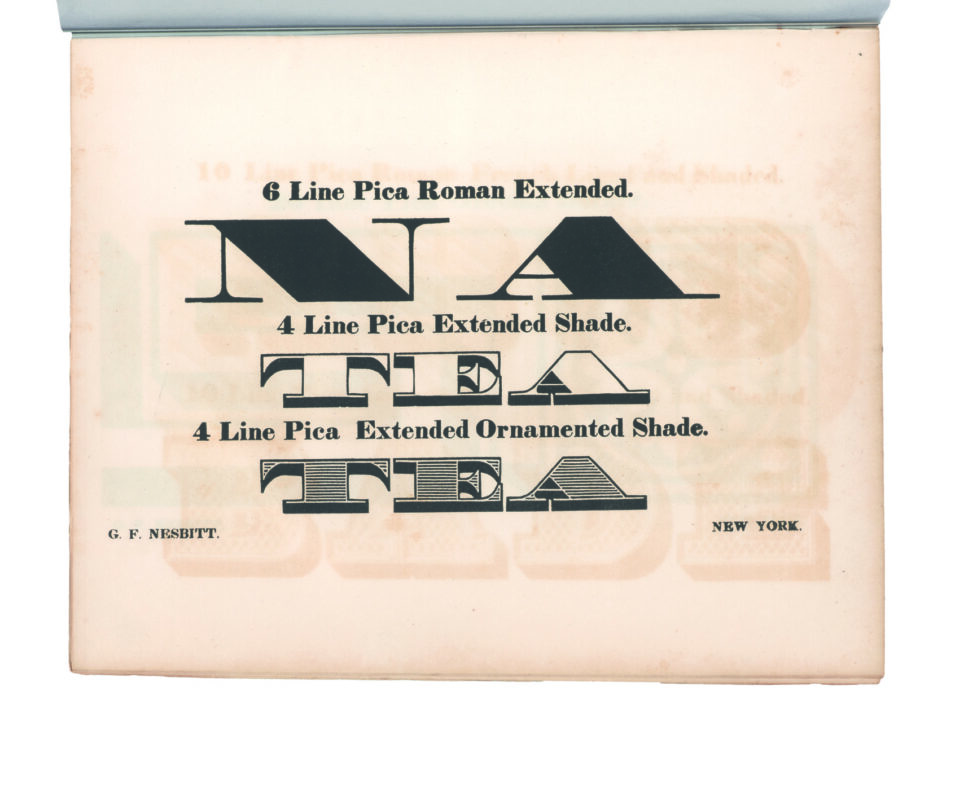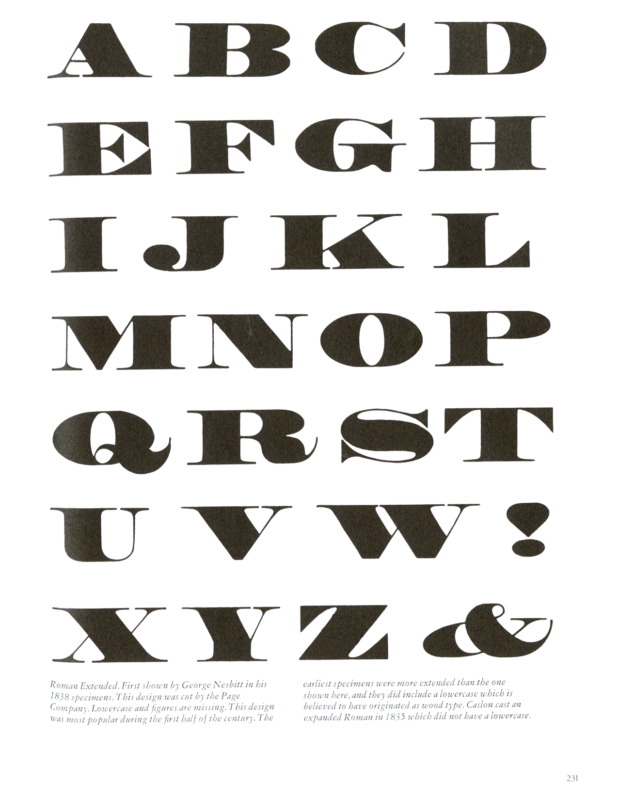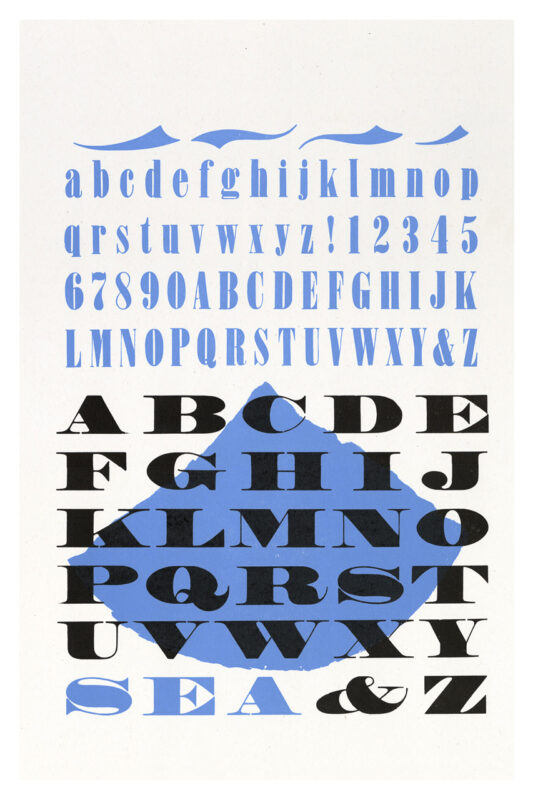Roman Extended
6 Line
Box 013
Roman | Fat Face | Uppercase
- This type measures 6 line in size and was produced with the end-cut method. The type block is stamped Page & Co., Greenville, Ct. which was used by Page and Basset between 1857–1859.
- This face was first shown as wood type by Edwin Allen in George Nesbitt’s 1838 First Premium Wood Types Cut by Machinery.
- This cut of Roman Extended was shown in American Wood Type on page 231 and in the folio on page 23.
Type name used by manufacturer:
Allen Roman Extended
Bill, Stark Roman Extended
Cooley Roman Extended
Knox Extended Roman
Morgans & Wilcox Roman Extended
Page Roman Extended [239]
Tubbs Roman Extended or No 2028
Wells Roman Extended [5151]
This is the Page cut.
Character Quantities
- A3
- B2
- C2
- D2
- E4
- F2
- G2
- H2
- I4
- J2
- K1
- L4
- M2
- N2
- O1
- P2
- Q1
- R2
- S4
- T2
- U2
- V2
- W2
- X1
- Y2
- Z1
- a-
- b-
- c-
- d-
- e-
- f-
- g-
- h-
- i-
- j-
- k-
- l-
- m-
- n-
- o-
- p-
- q-
- r-
- s-
- t-
- u-
- v-
- w-
- x-
- y-
- z-
- 0-
- 1-
- 2-
- 3-
- 4-
- 5-
- 6-
- 7-
- 8-
- 9-
- &1
- $-
- !2
- Open Apos/Comma2
- Close Apos1
- Period4
- Question Mark-
- Colon-
- Semi-Colon1
- Dash1
- Ligature-
- Other-



